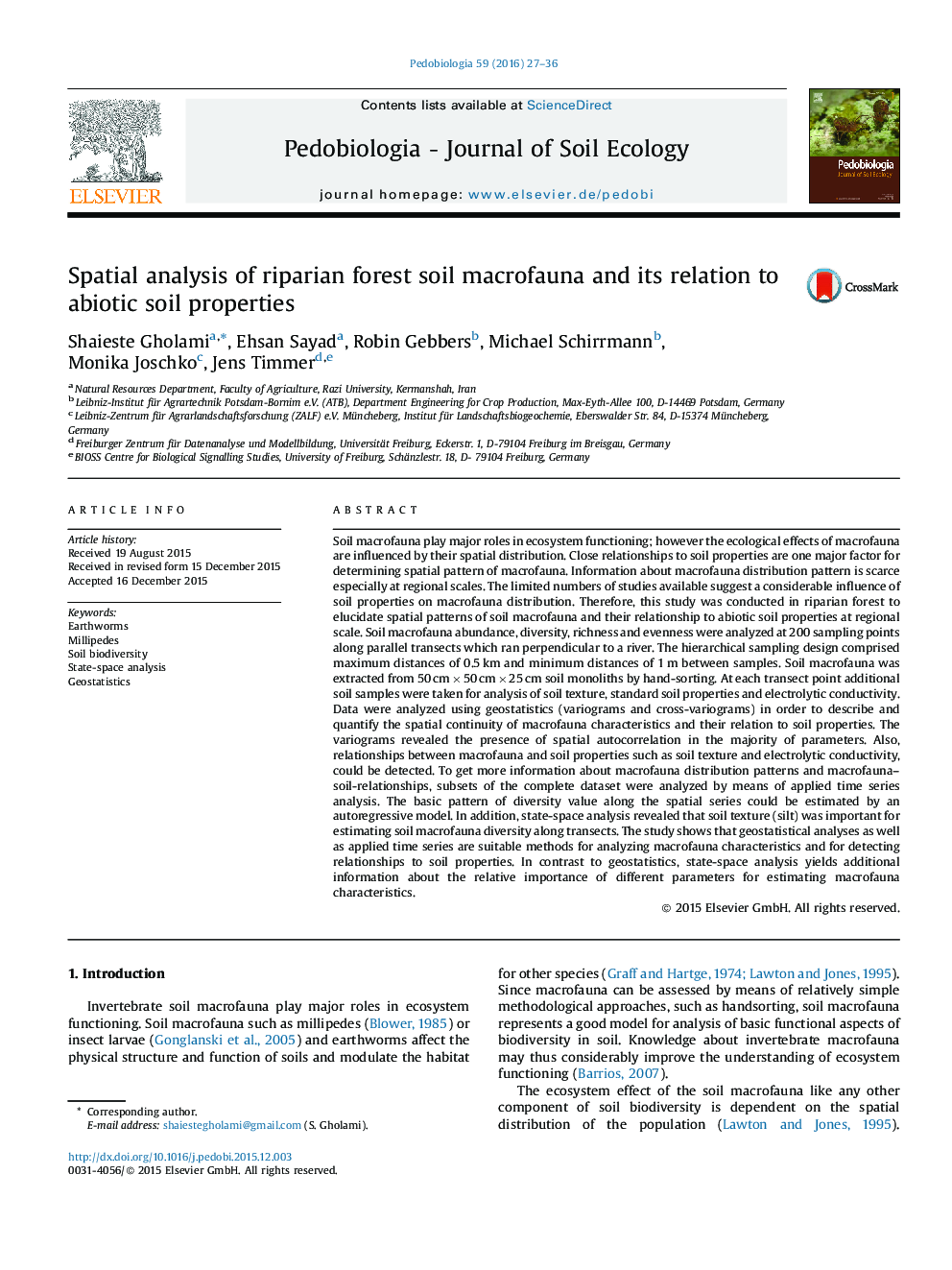| کد مقاله | کد نشریه | سال انتشار | مقاله انگلیسی | نسخه تمام متن |
|---|---|---|---|---|
| 2061164 | 1544024 | 2016 | 10 صفحه PDF | دانلود رایگان |
• Spatial pattern of soil macrofauna diversity and abiotic properties were analyzed by means of spatial statistics along transects in riparian forest of Iran.
• Macrofauna distributions were related to soil properties.
• Based on the observed relationships, the applied techniques may improve our understanding in the future.
Soil macrofauna play major roles in ecosystem functioning; however the ecological effects of macrofauna are influenced by their spatial distribution. Close relationships to soil properties are one major factor for determining spatial pattern of macrofauna. Information about macrofauna distribution pattern is scarce especially at regional scales. The limited numbers of studies available suggest a considerable influence of soil properties on macrofauna distribution. Therefore, this study was conducted in riparian forest to elucidate spatial patterns of soil macrofauna and their relationship to abiotic soil properties at regional scale. Soil macrofauna abundance, diversity, richness and evenness were analyzed at 200 sampling points along parallel transects which ran perpendicular to a river. The hierarchical sampling design comprised maximum distances of 0.5 km and minimum distances of 1 m between samples. Soil macrofauna was extracted from 50 cm × 50 cm × 25 cm soil monoliths by hand-sorting. At each transect point additional soil samples were taken for analysis of soil texture, standard soil properties and electrolytic conductivity. Data were analyzed using geostatistics (variograms and cross-variograms) in order to describe and quantify the spatial continuity of macrofauna characteristics and their relation to soil properties. The variograms revealed the presence of spatial autocorrelation in the majority of parameters. Also, relationships between macrofauna and soil properties such as soil texture and electrolytic conductivity, could be detected. To get more information about macrofauna distribution patterns and macrofauna–soil-relationships, subsets of the complete dataset were analyzed by means of applied time series analysis. The basic pattern of diversity value along the spatial series could be estimated by an autoregressive model. In addition, state-space analysis revealed that soil texture (silt) was important for estimating soil macrofauna diversity along transects. The study shows that geostatistical analyses as well as applied time series are suitable methods for analyzing macrofauna characteristics and for detecting relationships to soil properties. In contrast to geostatistics, state-space analysis yields additional information about the relative importance of different parameters for estimating macrofauna characteristics.
Figure optionsDownload as PowerPoint slide
Journal: Pedobiologia - Volume 59, Issues 1–2, January 2016, Pages 27–36
